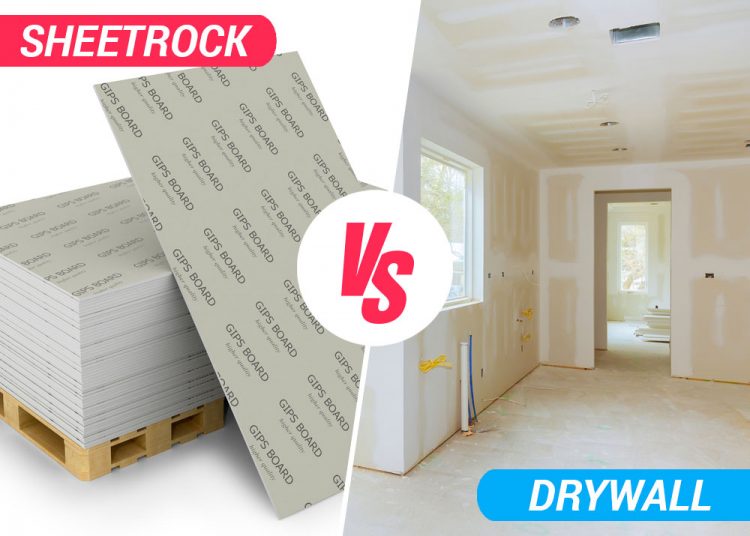Planning a home reno or a bit of DIY remodeling? If you’re doing any structural work around the house, you’ll need to know the difference between sheetrock and drywall.
Yes, both are construction materials used in interior walls to seal your home and provide stability, but they’re not exactly the same.
While you may hear builders and others in the industry using the terms sheetrock and drywall interchangeably, there are several key differences. So, let’s jump right in!
Sheetrock vs Drywall
Drywall is a construction material, and sheetrock is a brand name for a variety of drywall.
What does this mean? It means that all sheetrock is drywall, but not all drywall is sheetrock.
Imagine comparing a car with a Ferrari, and that should help give you an idea.
So what’s drywall?
Drywall is a plaster panel sandwiched between two boards and inserted within the walls or ceiling of a house to provide insulation.
Drywall first became popular in the post-war era, when the construction industry started exploring cheaper alternatives to thick, plaster walls.
Early on, one of the biggest advantages to drywall, aside from cost, was its easy installation. While plaster is wet, messy, and takes a long time to dry, drywall (as the name suggests) is already dry!
Nowadays, drywall is made with ground gypsum rock and a few other additives. This lightweight but sturdy material is pressed between boards or sheets, cut to size, and fitted into a building’s frame.
These versatile panels can be used all over the house and remain easy to install – making them perfect for DIY enthusiasts as well as expert fitters.
As the drywall market grew, different varieties became available. Now there’s a wide selection so you can match your drywall to the room in the house.
For example, mold-resistant varieties are commonly used in the bathroom (where things can get humid). And fire-resistant drywall is generally installed in the kitchen where there’s more risk of fire.
What is Sheetrock?
Sheetrock is a trademarked brand name belonging to the US Gypsum Company, which has a line of drywall products.
Sheetrock has become synonymous with drywall in the same way that Kleenex is to tissues.
It’s the most popular brand of drywall on the market and comes in a variety of sizes and styles.
Sheetrock vs Drywall – price
As with most products, off-brand versions are generally cheaper than more well-known versions.
That said, while Sheetrock may be a little more expensive than generic drywall, it comes with the assurance (and confidence) that you get from a tried and tested brand.
Final thoughts
Cheap drywall may save you some money, but it’s not always as reliable as Sheetrock. In fact, some manufacturers may even be using materials you’d rather not have in your walls.
Foreign companies, in particular, are not subject to the same safety regulations as US brands and therefore have more leeway in which materials they can use. Toxic chemicals and pollutants are a real danger and can cause a range of health problems if they leak dangerous substances during installation.
Between 2001 and 2009, Chinese drywall was imported into the States and used in several large-scale housing projects. It was later revealed that this drywall leaked sulfurous gases, severely affecting the health of the construction workers and residents.
As with any chemical-based product, it’s important to do your research and know the risks.
Now that you know the difference between drywall and Sheetrock, you can explore all the available options and use the best materials for your needs and home.
Happy renovating!






